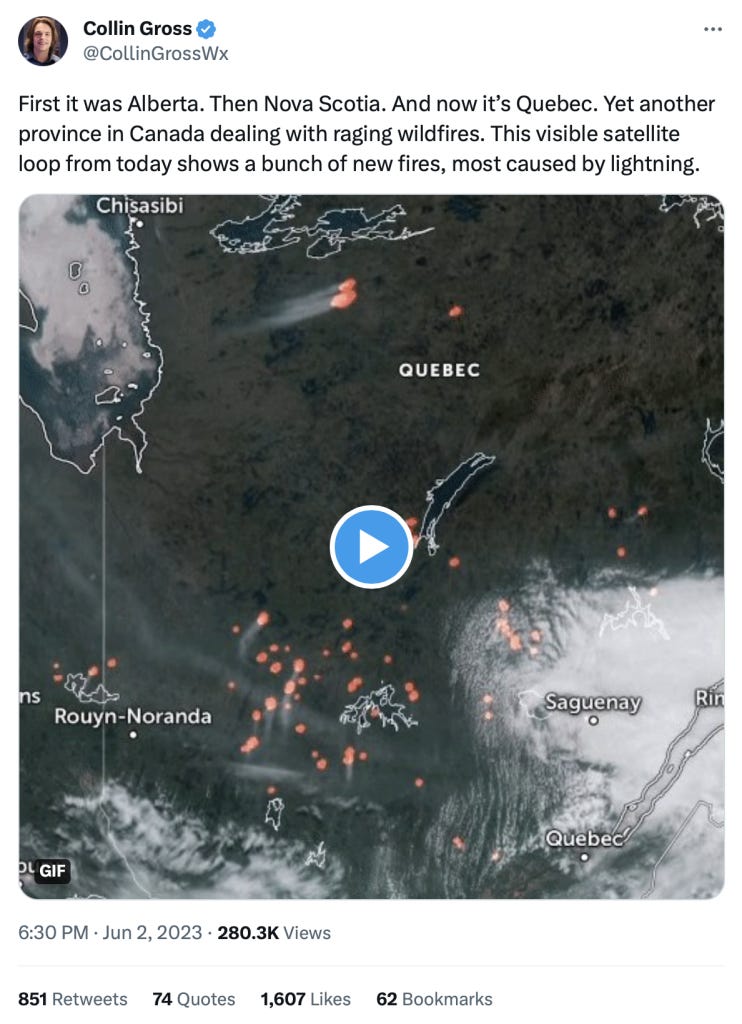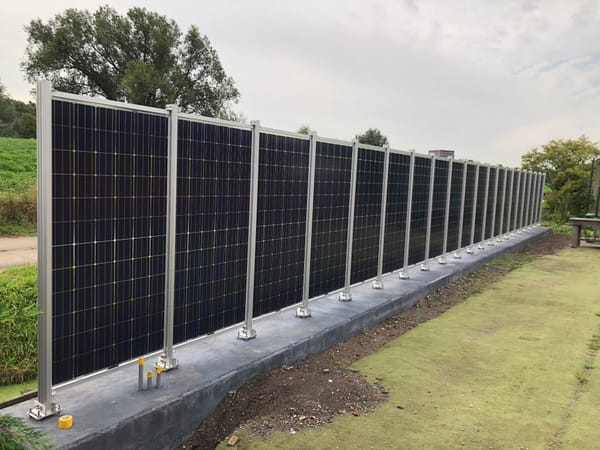Should we call it The Big Orange?
Last year’s smoky skies in San Francisco were scary, but we’ve pretty much inured ourselves to Western wildfires, so a smoke choked New York seems especially frightening
Then: The Big Apple, Now: The Big Orange
The open episode of the Apple+ climate dystopia series Extrapolations, has New York City choking under an orange, smoky sky from fires burning in the Adirondacks. The show was prescient, but It turns out that this week, fires from 350 miles north, in Quebec and Nova Scotia, have been just as capable of providing NYC the orange sky treatment. Last year’s smoky skies in San Francisco were scary, but we’ve pretty much inured ourselves to Western wildfires, so a smoke choked New York seems especially frightening.

Scientists are weighing in, and the consensus is that the Canadian fires’ intensity are driven by climate change. Most of Canada, From Alberta to the Maritimes, has been experiencing a drought since last fall, and record heat has been hitting Eastern Canada. It was 96-degrees Fahrenheit in Halifax last Thursday, and 95 in Ottawa the same day. The Arctic has been warming at a much faster pace than expected, which means less of a cold air mass up north, which means the Jet Stream has been pushed north and is acting wonky, which means more warm air heading north.
It seems like this is potentially a new normal, where everything looks like Blade Runner for a few weeks every summer.
- Stanford researchers say the Canadian wildfires is the worst wildfire pollution event in U.S. history.
- Ukraine’s ‘worst ecological disaster since Chornobyl’
Sources: Washington Post / Bloomberg / NBC News
Ukraine’s climate problems
Wednesday, it appears that Russian forces blew up the Nova Kakhovka dam and electric turbine, which held back 18 cubic kilometers of water in a massive reservoir along the Dnieper River. As a result, homes for over 40,000 people in both free and occupied Ukraine have been flooded. The dam’s and its turbines, built in 1956 and now totally destroyed, provide electricity for hundreds of thousands of people, but the lake created by the river served as a cooling water source for the six reactors at the Zaporizhzhia nuclear power plant, a few miles northeast of the dam.The Zaporizhzhia plant has been in shutdown mode since the Russians occupied land on the Dnieper’s south bank, and has enough water in ponds to stay cool “for several months” in its current state, but not if it was fully operational. So, along with the loss of those two no-carbon electricity sources, free and occupied Ukraine have been sustaining a series of explosions, including some large fuel depots, and the Nord Stream pipeline, as well as raising of forests, and sundry other dirty activities. Now, a report due to be released at UN climate negotiations in Bonn this week, “calculates that the first 12 months of the war will trigger a net increase of 120 million tonnes of greenhouse gasses, equivalent to the annual output of a country such as Belgium,” says Reuters.
Source: Reuters / New York Times / Guardian
Other Things Happened
- A few weeks after Ford made a similar deal, Tesla is now leasing its supercharger network to General Motors, giving future GM electric vehicle owners access to its 12,000 chargers in North America.
- Nestlé is paying cocoa growers to use sustainable methods in order to cut its corporate emissions impact.
- Here’s a pretty good explainer on how scientists think we could find “White Hydrogen”, or naturally occurring deposits deep underground.
- A study found that 4.2 million acres, or 800 million trees, were cut down in Brazil over the last six years to make room for growing beef cattle herds.
You made it to the end! Here’s an amazingly delayed text response.





